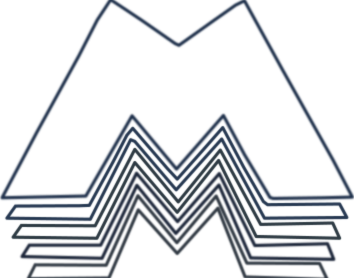Upcycling is The Most Resource-Efficient Alternative to Disposal.
Creative thinking keeps valuable materials in use - and out of the waste stream for longer.
Why upcycling projects often remain a fling.
There’s often a long road between a good idea and a finished product.
Upcycling has gained popularity through DIY marketplaces. But in everyday practice, it often fails due to the following hurdles:
- The idea is there – but the right material is missing.
- Or: the material is available – but there’s no clear idea.
- Implementation takes time, requires know-how – and often a first prototype.
- Is there truly a sustainable demand for the result?
- And even if everything works out: is there enough material for more than a one-off?
Without consistent supply, genuine demand, and shared ideas, upcycling often stays a one-off – falling short of becoming a true alternative to disposal.
Mass-Upcycling: Method Instead of Chance
What if used mass-produced items sparked the local creation of high-quality new products?
Global availability.

Many discarded products still contain well-preserved materials with real potential for reuse
- and that potential can be tapped locally.
This isn’t primarily about making new products – it’s about rethinking how we value materials and their role in a circular economy.
Mass-produced items as the starting point for local circular systems.
Our web app makes these resources visible: mass-produced items like sofa covers can become predictable sources of material.
Linked to proven follow-up product ideas – such as a belt bag – the material can be locally repurposed as needed.
Standardized, traceable, repeatable.
This way, a one-time prototype can evolve into a practical, scalable alternative to disposal – shared and implemented in many places.
Mass-Upcycling Rethinks Mass Consumption
- and shows how sustainable living is possible without compromise.
Impactful consumption.
When products are designed not just for their first use, but with their future reuse in mind, a new perspective emerges – one that creates sustainable value, local relevance, and shared benefit.
Mass consumption doesn’t have to lead to resource problems – Mass-Upcycling is our answer.
What’s possible – and at what material cost?
Our web app offers a forward-looking view of what lies beyond – for example, what a specific sofa cover could become.
The available material – in both amount and texture – shapes what new products can be created.
Mass-Upcycling provides guidance on how often these products can be replicated.
Follow-up product ideas are grouped according to their documented material needs.
select 3 x from this gallery:
or
select 6 x from this gallery:
The calculated number per gallery indicates how many upcycling ideas can be realized at minimum using the selected components of the sofa cover.
The galleries do not add up – each represents a distinct selection.
Variations are only possible within a single gallery. Depending on local needs, for example, six belt bags could be produced – or four covers for hot water bottles and two belt bags.
The Mass-Upcycling figures are intended as a guide for local circular economies – and above all, as a source of inspiration.
Connected action - locally rooted transformation.
For real change to happen, collaboration is key: Municipalities, retailers, waste management, craftspeople, educators, and cultural institutions could come together to create new spaces – to collect, disassemble and distribute materials.
Local production could become a lived alternative to disposal - visible, transparent, and effective.
Circular value creation emerges where shared ideas meet local implementation.
Three Steps Toward an Active Circular Economy
What options are generally available for keeping materials in the loop after product use?
Summed up, what disposal alternatives are currently available – matched to the product and ready for local fabrication?
Local infrastructure and suitable product characteristics make it easier to reuse valuable materials – and significantly increase the potential for individual realization.


